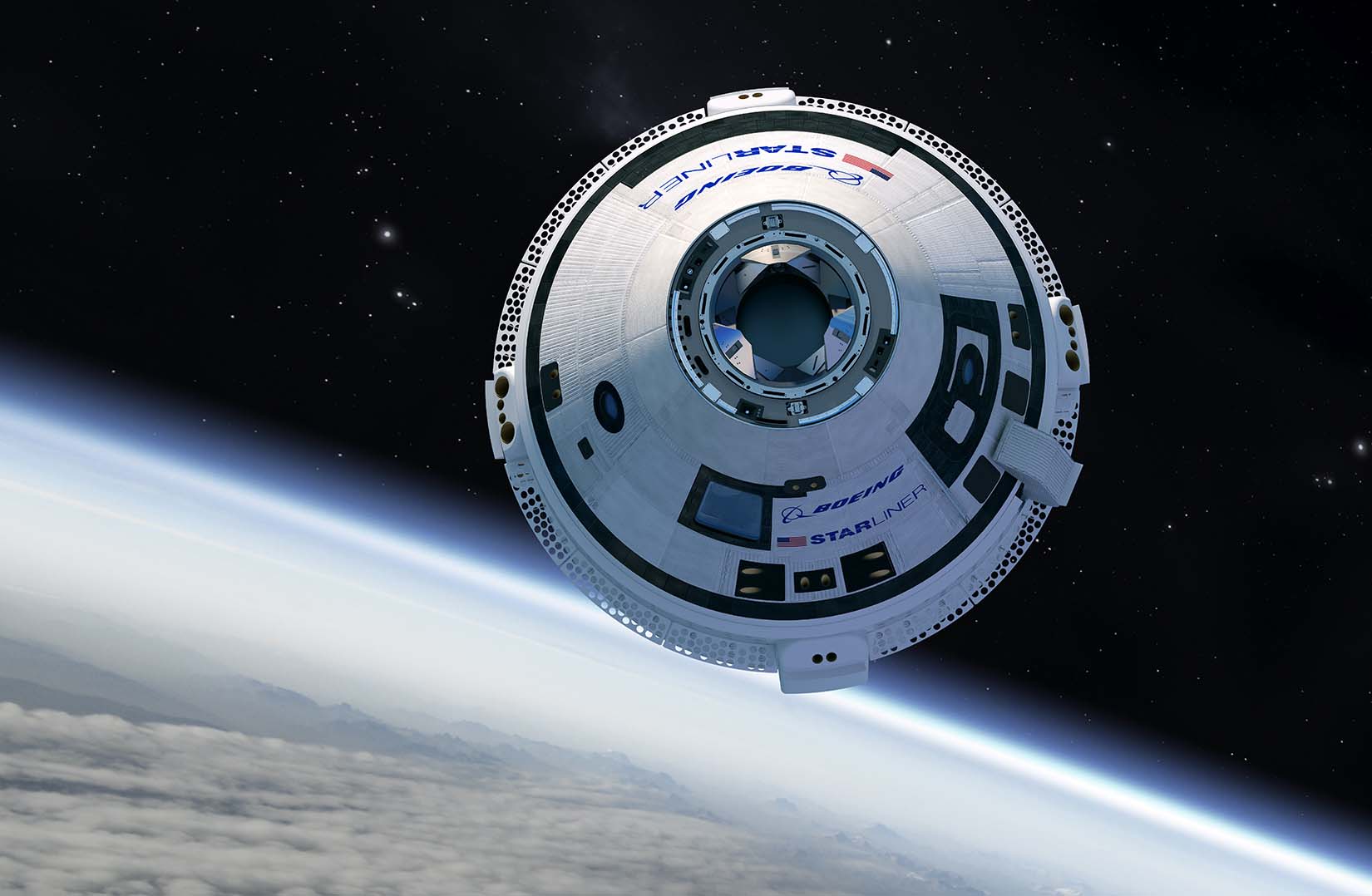Boeing's Starliner Spacecraft Will Be Ready for 1st Test Flight in March
Update for Feb. 6: NASA announced today that the Orbital Flight Test of the CST-100 Starliner has been postponed to April to "allow for completion of necessary hardware testing, data verification, remaining NASA and provider reviews, as well as training of flight controllers and mission managers."
WASHINGTON — Boeing is on track to launch its new astronaut taxi to the International Space Station (ISS) next month.
Along with SpaceX, the private spaceflight company was contracted by NASA to begin launching astronauts from U.S. soil again for the first time since the space shuttle program ended in 2011. Boeing's CST-100 Starliner won't be taking any astronauts along for its first flight to the ISS, however. After docking robotically with the orbiting lab, it will return to Earth for a parachute landing.
If this test flight goes according to plan, Boeing will be ready to launch its first crew of astronauts to the space station in August, Boeing spokesperson Maribeth Davis told Space.com during a presentation of Boeing's future vision for space travel here. [How Boeing's Commercial CST-100 Starliner Spacecraft Works]

The mission, named Orbital Flight Test, will launch from Cape Canaveral Air Force Station in Florida on an Atlas V rocket provided by the United Launch Alliance. It was originally scheduled to launch in August 2018. Following an anomaly during a test of the launch abort engines, Boeing delayed the mission to March. Although the Starliner has not yet flown in space, it has completed successful parachute drop tests within the confines of Earth's atmosphere.
The Starliner will be the second of two new astronaut taxis to debut for its maiden voyage in the coming months. SpaceX's Crew Dragon is currently scheduled to lift off on its first uncrewed test flight on Feb. 28, with a crewed flight to follow sometime in June.
Not only will the Starliner and Dragon become the first spacecraft to launch astronauts from U.S. soil in about eight years, but Boeing and SpaceX will also become the first private companies to launch people to the space station. Since the shuttle retired, NASA has been relying on Russia to launch astronauts to the space station using its Soyuz rocket-capsule combo.
Get the Space.com Newsletter
Breaking space news, the latest updates on rocket launches, skywatching events and more!
Email Hanneke Weitering at hweitering@space.com or follow her @hannekescience. Follow us on Twitter @Spacedotcom and on Facebook. Original article on Space.com.
Join our Space Forums to keep talking space on the latest missions, night sky and more! And if you have a news tip, correction or comment, let us know at: community@space.com.

Hanneke Weitering is a multimedia journalist in the Pacific Northwest reporting on the future of aviation at FutureFlight.aero and Aviation International News and was previously the Editor for Spaceflight and Astronomy news here at Space.com. As an editor with over 10 years of experience in science journalism she has previously written for Scholastic Classroom Magazines, MedPage Today and The Joint Institute for Computational Sciences at Oak Ridge National Laboratory. After studying physics at the University of Tennessee in her hometown of Knoxville, she earned her graduate degree in Science, Health and Environmental Reporting (SHERP) from New York University. Hanneke joined the Space.com team in 2016 as a staff writer and producer, covering topics including spaceflight and astronomy. She currently lives in Seattle, home of the Space Needle, with her cat and two snakes. In her spare time, Hanneke enjoys exploring the Rocky Mountains, basking in nature and looking for dark skies to gaze at the cosmos.









